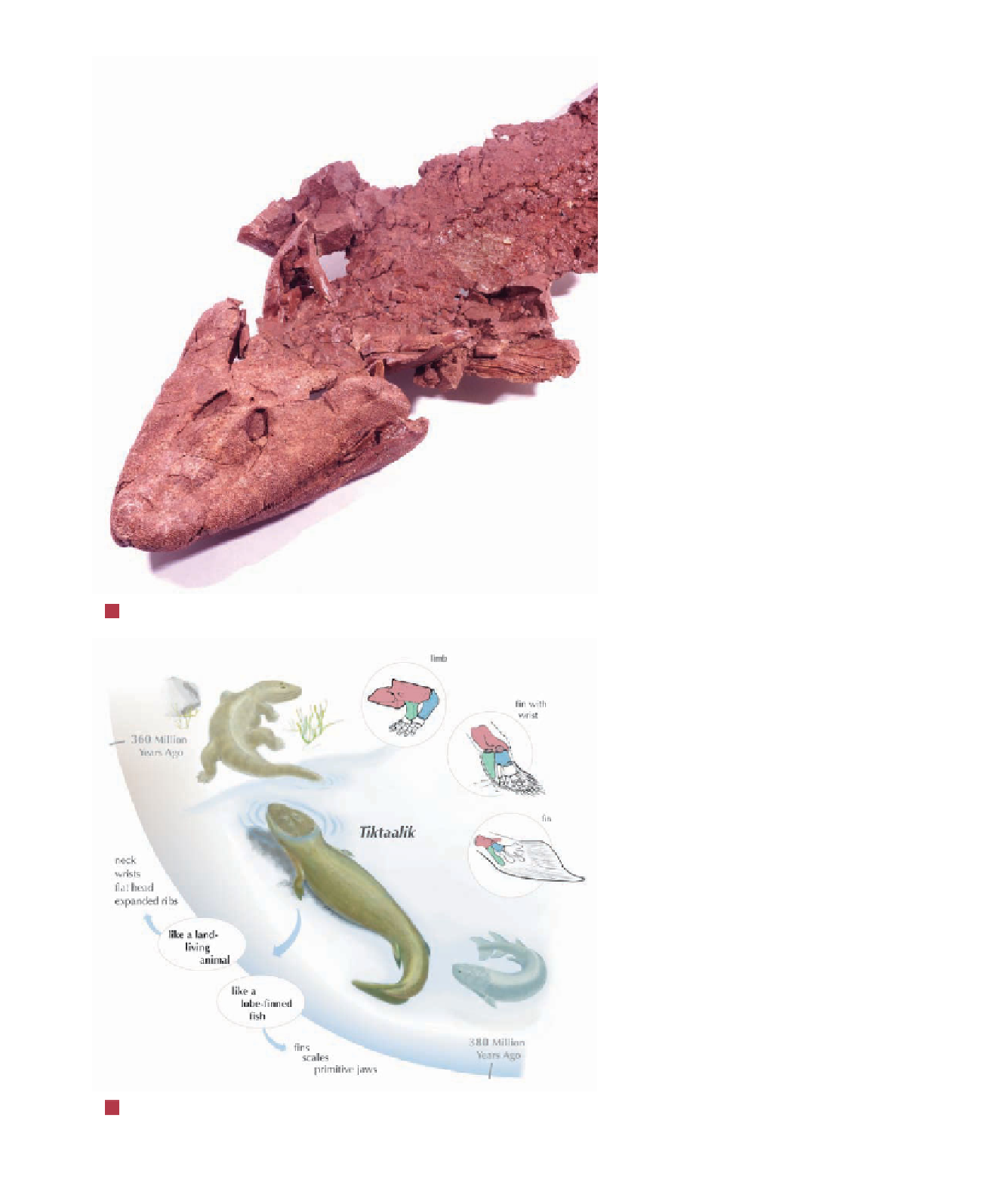Geology Reference
In-Depth Information
served as some type of thermoregulatory
device, raising the reptile's temperature
by catching the sun's rays or cooling it by
facing the wind. Because pelycosaurs are
considered to be the group from which
therapsids evolved, it is interesting that
they may have had some sort of body-
temperature control.
The pelycosaurs became extinct dur-
ing the Permian and were succeeded by
the
therapsids
, mammal-like reptiles that
evolved from the carnivorous pelyco-
saur lineage and rapidly diversifi ed into
herbivorous and carnivorous lineages
(
◗
Figure 21.25
Tiktaalik roseae
Tiktaalik roseae
, a “fi shapod,” has been hailed
as an intermediary between lobe-fi nned fi sh and tetrapods because it has
characteristics of both fi sh and tetrapods.
Figure 21.30). Therapsids were small- to
medium-sized animals that displayed the
beginnings of many mammalian features:
fewer bones in the skull because many of
the small skull bones were fused; enlarged
lower jawbone; differentiation of teeth for
various functions such as nipping, tear-
ing, and chewing food; and more verti-
cally placed legs for greater fl exibility, as
opposed to the way that the legs sprawled
out to the side in primitive reptiles.
Furthermore, many paleontologists
think that therapsids were
endothermic
, or
warm-blooded, enabling them to main-
tain a constant internal body temperature.
This characteristic would have let them
expand into a variety of habitats, and in-
deed the Permian rocks in which their
fossil remains are found are distributed
not only in low latitudes, but in middle
and high latitudes as well.
As the Paleozoic Era came to an end,
the therapsids constituted about 90% of
the known reptile genera and occupied
a wide range of ecological niches. The
mass extinctions that decimated the ma-
rine fauna at the close of the Paleozoic
had an equally great effect on the terres-
trial population. By the end of the Perm-
ian, about 90% of all marine invertebrate
species were extinct, compared with
more than two-thirds of all amphibians
and reptiles. Plants, in contrast, appar-
ently did not experience as great a turn-
over as animals.
◗
a
Skeleton of
Taktaalik roseae
.
When plants made the transition from
water to land, they had to solve most of
the same problems that animals did: des-
iccation, support, reproduction, and the
effects of gravity. Plants did so by evolving
b
Diagram illustrating how
Tikaalik roseae
is a transitional species between
lobe-fi nned fi sh and tetrapods.

Search WWH ::

Custom Search